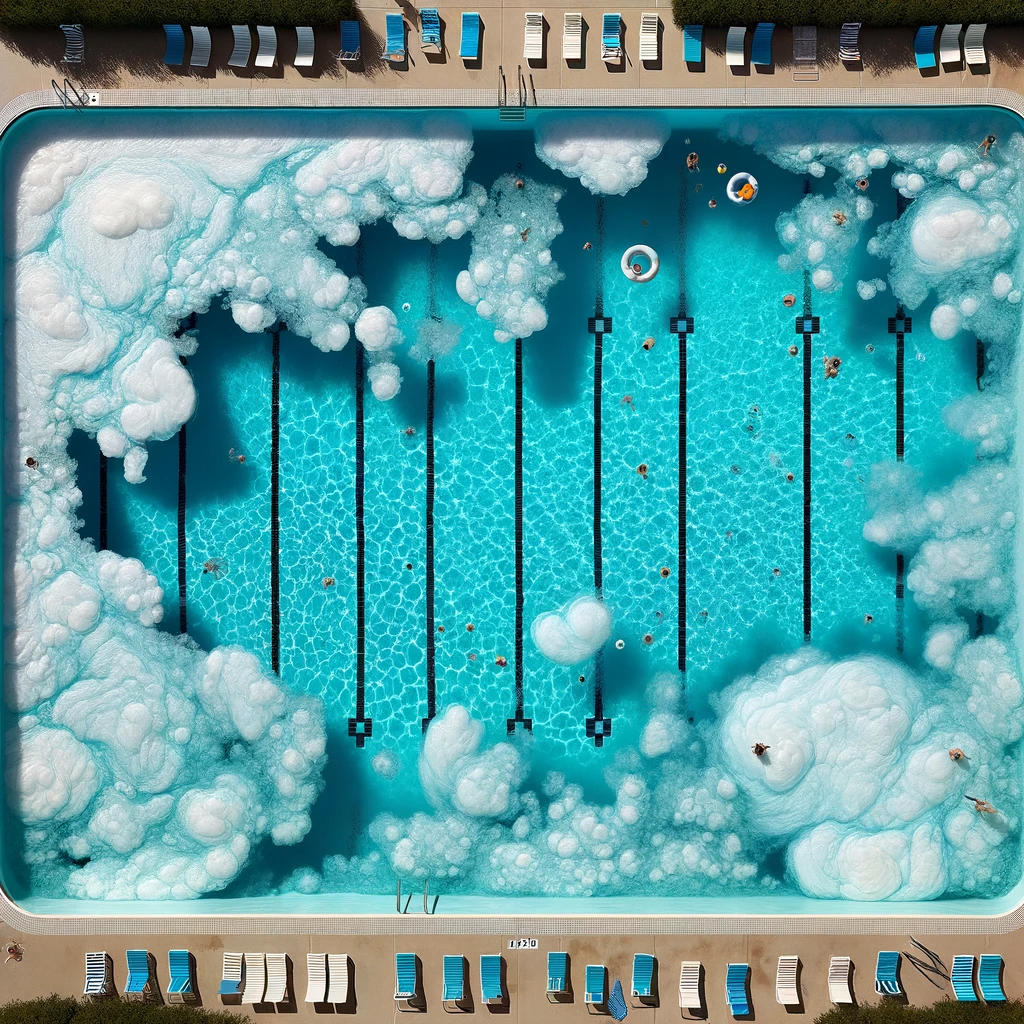A clean and clear swimming pool not only provides a delightful experience but also reduces the presence of bacteria and contaminants, minimizing health risks. The removal of suspended particles from the pool is a crucial aspect of daily pool maintenance, especially when a vacuum device is unavailable. Below, we will guide you on how to remove flocculant from the pool when a vacuum is not at hand.

I. Why Remove Flocculant
The role of flocculant is to aggregate particles, but these aggregates can settle as sediment or float on the water’s surface. If not removed promptly, they may lead to new water quality issues, such as cloudiness or impurities. Pool water must remain consistent to ensure a safe swimming environment. Removing flocculant helps maintain water quality, preventing fluctuations or deterioration caused by the accumulation of sediments. The clarity of pool water is a significant attraction for swimmers. Removing flocculant ensures the pool water remains clear, offering a more enjoyable swimming experience.
II. Methods for Removing Flocculant without a Vacuum
A. Manual Cleaning
Using Clean Water Rinsing
Thoroughly wet the pool’s surface with clean water, especially in areas with apparent residual flocculant.
Gently rinse the pool’s surface with water from a hose or by pouring water from a bucket to remove any remaining flocculant. Be cautious not to rinse forcefully to avoid redistributing tiny particles in the water.
Using a Skimmer or Scoop Net
Another manual method for cleaning flocculant is using a skimmer or scoop net. This method is suitable for larger particle aggregates that can be easily captured with a net.
Immerse the skimmer or scoop net into the water, ensuring the particles are trapped in the net.
Slowly move the skimmer or scoop net from the pool’s surface, starting at the top and gradually moving toward the pool’s bottom. This way, you can effectively capture and remove particles.
Regularly clear the particles from the skimmer or scoop net and dispose of them in a trash bag.
B. Using Homemade Tools
Homemade Flocculant Cleaner
1.Prepare a long pole, which can be made of wood or metal.
2.Attach a large container, such as a plastic bucket or frame, to one end of the pole, ensuring that the container can hold some water.
3.Make several small holes at the bottom or sides of the container to allow water to enter.
4.Use the homemade cleaner to gather flocculant from the pool’s surface into the container. Water will enter the container through the small holes, carrying away the flocculant.
5.Regularly pour out the water and flocculant from the container and dispose of the flocculant residue.
Manual Pumping Method
1.Prepare a pump and a long hose.
2.Connect one end of the hose to the pump.
3.Place the pump’s other end in the pool, ensuring it is at the water’s surface and can draw water.
4.Turn on the pump to remove water from the pool. This will take away the flocculant from the water.
5.After removing a portion of the pool water, stop the pumping and refill the pool with clean water.
In the absence of a vacuum device, we have provided several effective methods for removing flocculant, including manual cleaning and using homemade tools. Manual cleaning can be achieved by rinsing with clean water or using a skimmer or scoop net. Additionally, you can try making a homemade flocculant cleaner or use the manual pumping method. The choice of method depends on your resources and the size of your swimming pool.
In conclusion, removing flocculant is a necessary step in maintaining pool water quality. Choosing the appropriate method and conducting regular maintenance will help ensure that the swimming pool remains clear, clean, and safe.
